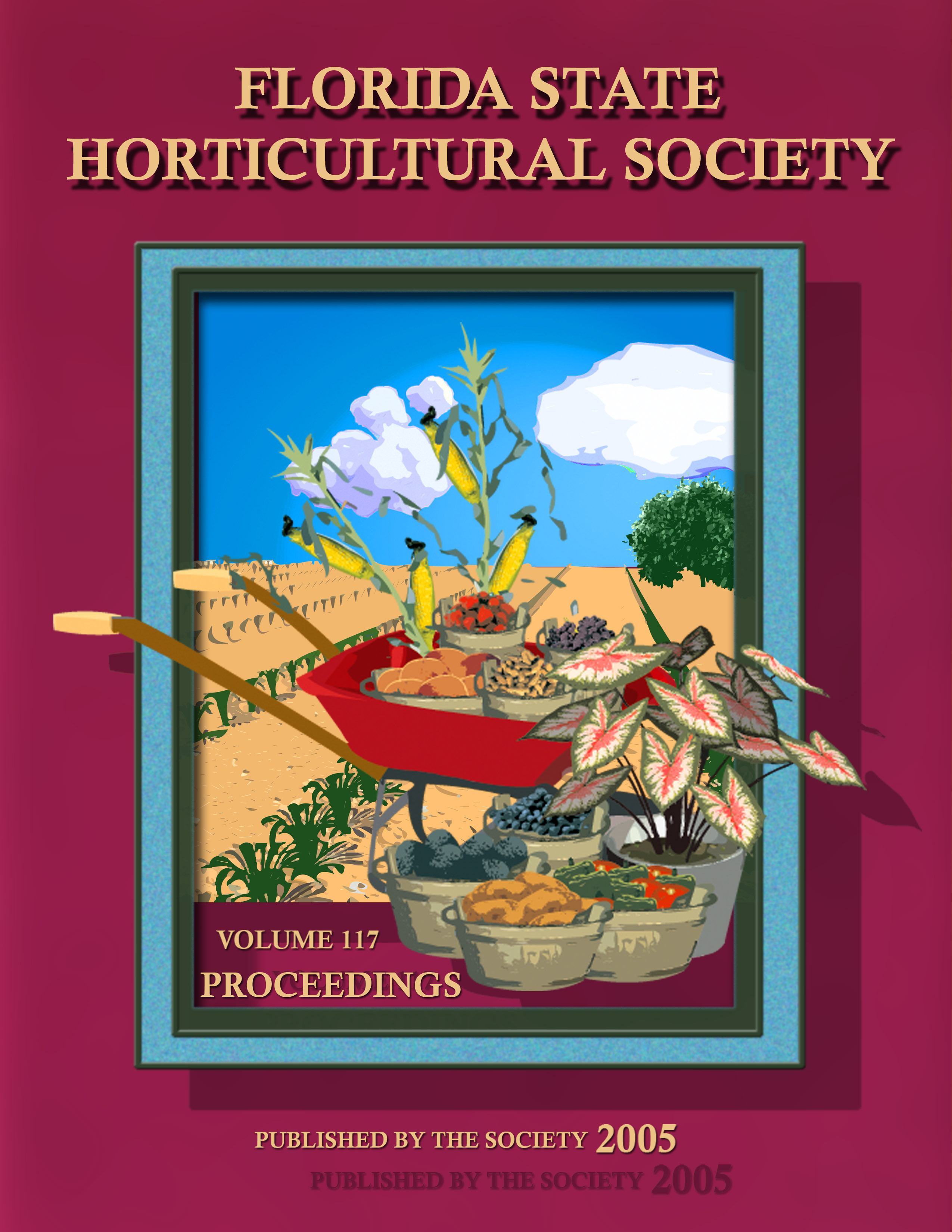Abstract
A pest management study of Diaprepes root weevil (DRW), Diaprepes abbreviatus (L.), was initiated in a bedded planting of 2-year-old 'Hamlin' orange trees budded on five rootstocks: Swingle citrumelo, Cleopatra mandarin, C-22, C-32, and C-35 citrange. The experimental site was located within a declining mature 'Hamlin' grove harboring a high DRW population. In 2003, after 2 years on a young tree care program that included insect and mite control, we compared the effect of foliar and soil-applied chemicals to no pesticides in a seasonal management program. DRW adult emergence from the soil and abundance in the trees was monitored and the incidence of Phytophthora nicotianae Breda de Haan in the soil was assessed. Foliar and soil-applied chemicals reduced adult DRW populations significantly for trees on all rootstocks. Treated trees had a faster rate of growth (except Cleopatra mandarin), larger tree canopies, fewer adult weevils, and less tree decline than untreated trees, but no significant difference in leaf injury was detected. Trees on C-32, C-35, and Swingle citrumelo had higher growth rates, canopy volumes, leaf injury, and weevil populations, but less tree decline than those on C-22 and Cleopatra mandarin. It appeared that root injury by DRW larvae created sites for infection and bark damage by Phytophthora. Tree decline was reduced overall by chemical treatments for DRW control and was lower for the Phytophthora resistant rootstocks, C-35 citrange and Swingle citrumelo.

